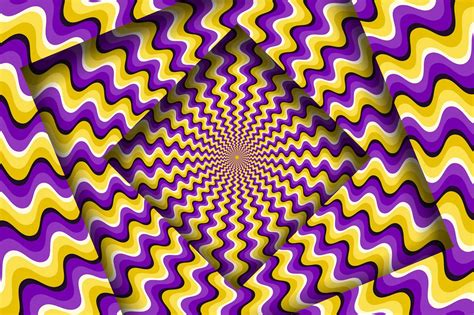
An enduring optical illusion, known as the “My Wife and My Mother-in-Law” drawing, purportedly reveals insights into an individual’s cognitive processing style and age bias, according to recent analysis highlighted across social media platforms. The classic ambiguous image, first published in 1915 by cartoonist William Ely Hill, presents viewers with the possibility of seeing either a young woman or an older woman, and the initial perception may correlate with age and cognitive tendencies.
The perception of the “My Wife and My Mother-in-Law” illusion, which has resurfaced in online discussions, serves as a tool for gauging how the brain processes visual information and prioritizes certain cues. “What you see first in this optical illusion can reveal a thing or two about your own brain,” the article stated, reflecting the renewed interest in the psychological implications of the image.
The core premise behind this assertion is that individuals’ brains are predisposed to recognize patterns and features based on their existing experiences and age-related biases. The study suggests that younger individuals tend to see the younger woman first, while older individuals are more likely to identify the older woman initially. This bias is attributed to the brain’s inclination to favor familiar and age-relevant features.
The illusion plays on the brain’s capacity for visual ambiguity, where a single image can be interpreted in multiple ways. This ambiguity forces the viewer to rely on cognitive shortcuts and perceptual biases to resolve the visual information, resulting in the perception of one image over the other. The study points to the idea that our brains are not merely passive receivers of information but active interpreters that use past experiences to make sense of the world.
The image itself is a cleverly designed composite that combines elements of both a young woman and an older woman. The young woman is depicted with her head turned away, revealing her cheek, jawline, and a portion of her neck. The older woman is represented by the same lines, but perceived differently as her nose becomes the young woman’s jawline, and her mouth becomes a necklace around the young woman’s neck. The brain must quickly decide which interpretation to prioritize, and this decision-making process is what the illusion seeks to expose.
The recent interest in this illusion stems from its viral spread on social media platforms, where users have shared their experiences and interpretations. This has led to widespread discussions about the accuracy and validity of the claim that the initial perception of the image reveals age or cognitive biases. While the illusion is not a definitive diagnostic tool, it provides an intriguing glimpse into the workings of the brain and the influence of perception on our understanding of the world.
The illusion works by exploiting the principles of Gestalt psychology, which emphasizes that the brain organizes visual elements into meaningful wholes. According to Gestalt principles, the brain tends to perceive objects as complete and organized patterns, even when the visual information is incomplete or ambiguous. In the case of the “My Wife and My Mother-in-Law” illusion, the brain must actively construct a coherent image from the ambiguous lines and shapes.
One of the key principles of Gestalt psychology is the concept of figure-ground relationship, which refers to the way the brain separates an object (the figure) from its background (the ground). In the illusion, the same lines can be perceived as either the figure or the ground, depending on how the brain organizes the visual information. This shifting figure-ground relationship is what creates the ambiguity that makes the illusion so compelling.
The illusion also relies on the principle of closure, which states that the brain tends to fill in gaps in visual information to create complete and recognizable shapes. In the case of the “My Wife and My Mother-in-Law” illusion, the brain may fill in the missing lines and shapes to create either the image of a young woman or an older woman. This process of closure is influenced by the viewer’s past experiences and cognitive biases.
The study of optical illusions has a long history in psychology, dating back to the early days of experimental psychology in the late 19th century. Psychologists have used optical illusions to study the mechanisms of perception, attention, and cognition. Optical illusions provide a unique opportunity to examine how the brain processes visual information and how it is influenced by factors such as context, expectation, and prior knowledge.
One of the most famous optical illusions is the Müller-Lyer illusion, which consists of two lines of equal length, but one line appears longer because it has arrowheads pointing inward, while the other line has arrowheads pointing outward. This illusion has been used to study the role of visual context in perception. Another well-known optical illusion is the Ponzo illusion, which consists of two lines of equal length, but one line appears longer because it is placed between two converging lines, creating the illusion of depth. This illusion has been used to study the role of depth perception in visual illusions.
The “My Wife and My Mother-in-Law” illusion is particularly interesting because it involves the perception of human faces, which are highly salient and emotionally charged stimuli. The brain has specialized neural circuits for processing faces, and these circuits are sensitive to subtle variations in facial features. The illusion exploits these neural circuits to create ambiguity and force the viewer to make a perceptual decision.
One possible explanation for the age-related bias in the perception of the illusion is that older individuals have had more experience with older faces, and therefore their brains are more attuned to the features of older faces. Younger individuals, on the other hand, have had more experience with younger faces, and their brains are more attuned to the features of younger faces. This difference in experience may lead to a bias in the perception of the illusion.
Another possible explanation is that the illusion reflects a more general cognitive bias towards familiarity. The brain tends to favor familiar stimuli, and this bias may lead individuals to perceive the image that is most consistent with their past experiences. For older individuals, this may be the image of an older woman, while for younger individuals, this may be the image of a young woman.
The study of optical illusions has implications for a wide range of fields, including art, design, and computer vision. Artists and designers use optical illusions to create visual effects and manipulate the perception of their work. Computer vision researchers use optical illusions to develop algorithms for image recognition and object detection.
In the field of art, optical illusions have been used to create a variety of effects, such as the illusion of depth, movement, and texture. Artists such as M.C. Escher have become famous for their use of optical illusions in their work. Escher’s drawings often depict impossible objects and paradoxical scenes that challenge the viewer’s perception of reality.
In the field of design, optical illusions can be used to create visually appealing and functional products. For example, designers may use optical illusions to make a small room appear larger or to make a product stand out on a shelf. Optical illusions can also be used to improve the usability of products by making them easier to see and understand.
In the field of computer vision, optical illusions are used to test and improve the performance of image recognition algorithms. By presenting algorithms with images that contain optical illusions, researchers can assess how well the algorithms are able to recognize objects in the presence of ambiguity and noise. This information can be used to develop more robust and accurate image recognition algorithms.
The “My Wife and My Mother-in-Law” illusion serves as a reminder that perception is not a passive process but an active construction that is influenced by our experiences, biases, and expectations. The brain is constantly making inferences and interpretations based on the limited information available to it, and these inferences can sometimes lead to illusions and misperceptions.
The resurgence of interest in this illusion highlights the enduring fascination with the workings of the human brain and the mysteries of perception. As we continue to explore the complexities of the brain, optical illusions will undoubtedly continue to play a valuable role in our understanding of how we see and interpret the world around us.
It is important to note that while the “My Wife and My Mother-in-Law” illusion may provide some insights into cognitive processing, it is not a definitive test of age or cognitive ability. The perception of the illusion can be influenced by a variety of factors, including visual acuity, attention, and cultural background. Therefore, it is important to interpret the results of the illusion with caution and avoid drawing any firm conclusions about an individual’s age or cognitive abilities based solely on their perception of the illusion.
Moreover, it’s crucial to approach such viral trends with a degree of skepticism. While the illusion can be a fun and engaging way to explore the complexities of perception, it should not be taken as a scientifically validated measure of cognitive function. The human brain is incredibly complex, and a single optical illusion cannot capture the full range of its abilities and biases.
The renewed interest in the “My Wife and My Mother-in-Law” illusion underscores the importance of critical thinking and media literacy in the digital age. As we are bombarded with information from various sources, it is essential to evaluate the credibility and accuracy of the information before accepting it as fact. In the case of the illusion, it is important to recognize that the claim that it reveals age or cognitive biases is based on anecdotal evidence and limited research.
Furthermore, the illusion raises ethical considerations about the potential for bias and discrimination. If individuals are judged or stereotyped based on their perception of the illusion, this could lead to unfair treatment and discrimination. It is important to remember that the illusion is not a reliable indicator of individual characteristics and should not be used to make judgments about people.
In conclusion, the “My Wife and My Mother-in-Law” illusion provides a fascinating glimpse into the workings of the human brain and the complexities of perception. While the illusion may offer some insights into cognitive processing and age-related biases, it is important to interpret the results with caution and avoid drawing any firm conclusions about an individual’s age or cognitive abilities based solely on their perception of the illusion. The illusion serves as a reminder that perception is an active construction influenced by our experiences, biases, and expectations, and that critical thinking and media literacy are essential in the digital age.
Frequently Asked Questions (FAQ)
Q1: What is the “My Wife and My Mother-in-Law” illusion?
A: The “My Wife and My Mother-in-Law” illusion is a classic ambiguous image drawn by cartoonist William Ely Hill in 1915. It presents viewers with two possible interpretations: the image of a young woman or the image of an older woman. The perception of the illusion is thought to be influenced by age and cognitive biases. The way the brain processes visual information and which image is prioritized depends on the individual viewer. The young woman is depicted with her head turned away, revealing her cheek, jawline, and a portion of her neck. The older woman is represented by the same lines, but perceived differently as her nose becomes the young woman’s jawline, and her mouth becomes a necklace around the young woman’s neck.
Q2: How does the illusion work?
A: The illusion works by exploiting the principles of Gestalt psychology, which emphasizes that the brain organizes visual elements into meaningful wholes. The brain tends to perceive objects as complete and organized patterns, even when the visual information is incomplete or ambiguous. The illusion relies on the principles of figure-ground relationship and closure. The same lines can be perceived as either the figure or the ground, depending on how the brain organizes the visual information. The brain may fill in the missing lines and shapes to create either the image of a young woman or an older woman.
Q3: Does the illusion reveal my age or cognitive abilities?
A: According to some interpretations, younger individuals tend to see the younger woman first, while older individuals are more likely to identify the older woman initially. This is attributed to the brain’s inclination to favor familiar and age-relevant features. However, it is important to note that the illusion is not a definitive test of age or cognitive ability. The perception of the illusion can be influenced by a variety of factors, including visual acuity, attention, and cultural background. Therefore, it is important to interpret the results of the illusion with caution and avoid drawing any firm conclusions about an individual’s age or cognitive abilities based solely on their perception of the illusion.
Q4: Is there scientific evidence to support the claim that the illusion reveals age or cognitive biases?
A: The claim that the illusion reveals age or cognitive biases is based on anecdotal evidence and limited research. While the illusion may provide some insights into cognitive processing, it is not a scientifically validated measure of cognitive function. The human brain is incredibly complex, and a single optical illusion cannot capture the full range of its abilities and biases. More research is needed to determine the extent to which the illusion is influenced by age, cognitive abilities, and other factors.
Q5: What are the ethical considerations associated with the illusion?
A: The illusion raises ethical considerations about the potential for bias and discrimination. If individuals are judged or stereotyped based on their perception of the illusion, this could lead to unfair treatment and discrimination. It is important to remember that the illusion is not a reliable indicator of individual characteristics and should not be used to make judgments about people. Additionally, it’s crucial to approach such viral trends with a degree of skepticism and avoid overinterpreting the results. The illusion should be viewed as a fun and engaging way to explore the complexities of perception, rather than a definitive measure of cognitive function.









